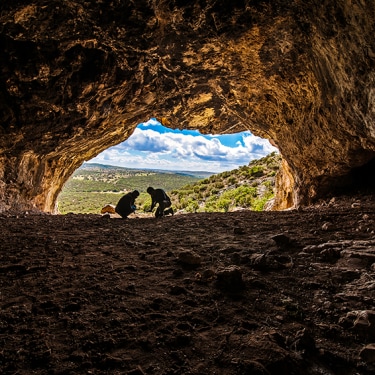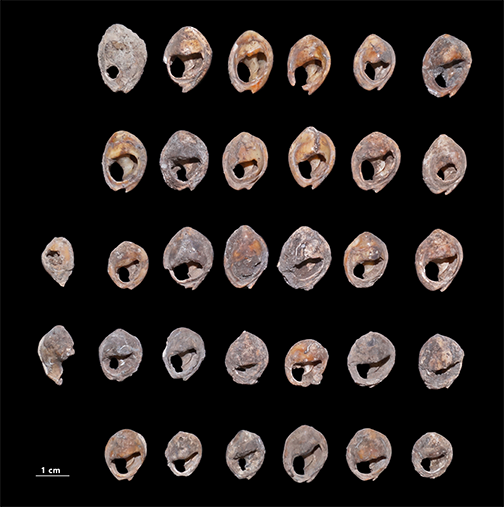
These jewels were found recently, between 2014 and 2018, near Essaouira in Morocco, in the Bizmoune cave. Their discovery, quite extraordinary! It was only revealed last year. They are thirty-two small shells, at first sight insignificant, very modest by their dimensions and their simplicity. On closer inspection, however, they show precious clues proving that they have been worked by man to be worn: traces of perforation and polishing are visible as well as remains of red pigment.
Did these shells form a necklace, several bracelets, a belt or were they simply sewn onto clothing? It is difficult to answer this question, but archaeologists agree that they are the oldest known adornments in history and the first form of artistic expression of humanity. They were indeed found far from the coast, about fifty kilometers away and were not collected for food. It is thus for another use, ornamental, that they were collected, transported, worked and finally worn by man. Because of their small size (an average of one centimeter long), real skill was necessary to pierce them without breaking them: those who created these first jewels have demonstrated real savoir-faire!

If the date of these ornaments is exceptionally old, such evidence is not rare. Numerous shells have been discovered in various archaeological excavations, particularly in North Africa. The frequency of such ornaments in this geographical area suggests common habits, perhaps even a shared symbolic use. For the function of these early ornaments was probably social or religious. They can be interpreted as an expression of the social and cultural identi-ty of the wearers. They also testify to a system of exchange or communication between geo-graphically distant human groups.
The thirty-two shells found near Essaouira are therefore rich in meaning. They bring to light the anteriority of the jewel on all the other forms of art and enunciate the intimate relationship of the man to the jewel since the dawn of time.
At L’ÉCOLE, School of Jewelry Arts we explore and share with you all the dimen-sions of jewelry, its savoir-faire and its history, through ages and cultures.
Starting in May, discover with L'ÉCOLE the fabulous adventure of glyptics, the art of engraved stones, through our next exhibition in Paris and our online conferences. Also in this Bulletin: the publication of a new book that will be a reference, the Dictionary of Jewel-ers and Goldsmiths in France from 1850 to the present day, and of course a choice of more than 30 introductory courses on the history of jewelry, the world of stones and savoir-faire!
Photo: Bizmoune Cave. © Bizmoune Cave, Essaouira. (Morocco) Mohammed Kamal
__________________
Guillaume Glorieux
University Professor
Director of Teaching and Research at L’ÉCOLE, School of Jewelry Arts
